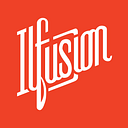4 Ways to Optimize Product Pages to Boost Sales
For eCommerce businesses, it stands to reason that the product page is the most important part of an eCommerce website. While your homepage initially attracts visitors to your business, it’s the product page that converts these visitors into paying customers.
What makes a product page effective and high-converting? Basically, the best product pages are those that cultivate customer confidence and loyalty, ultimately convincing visitors to become patrons of your brand.
Four major things come together when creating a stellar product page: your product itself, your visual elements, your copywriting, and your page’s UI and UX. Here are ways to optimize and level up your product pages to boost sales:
1. Craft an engaging product title
Your product title is probably the first thing that customers notice when browsing your product page — it’s the hook that reels in potential buyers. When crafting your product titles, make sure that these are engaging and compelling.
Use descriptive words and target keyword phrases to optimize your product tile. For example, “Wine Glass Set” seems barren and unconvincing compared to “Brand Z Rosewood Collection Wine Glasses, Set of 12.”
A typical product title format includes the brand name, variant (color, flavor, etc.), size/quantity, and keywords. The key here is to know and understand what keywords potential buyers will likely use when searching for your products.
2. Showcase high-quality product images
Your visual elements, including product images, play a larger role in the success of your eCommerce business, far more than attracting customers. These images are also a reflection of your brand’s reputation and reliability, so it’s paramount to invest in professional photography for your product images.
When showcasing product images on your page, it’s important not only to include photos of your product in relevant angles, but also to include lifestyle shots that demonstrate how your products can be actually used.
If budget permits, you can also consider using 360-degree shots, short explainer videos, or even interactive AR images to fully demonstrate what your product is and to provide an immersive experience for your customers.
3. Create a detailed product description
Your product description goes hand in hand with your product title, and stellar copywriting is crucial here. In fact, studies have shown that conversion rates boost up to 78% when a product has a clear and high-quality description.
The key to creating a high-converting product description is to provide informative details to persuade customers why they should buy your product over everyone else’s. When writing your product description, it’s important to keep a good balance of showcasing your product’s features and benefits.
For example, if you’re selling organic shampoo bars, customers would want to know the ingredients, the size, the scent, the price, etc. Adding phrases such as “Help save the environment, one shampoo bar at a time,” or “Safe for delicate and sensitive skin, safe for the planet too,” or “Perfect for people on the go!” can further convince customers to buy your product.
4. Make the shopping experience user-intuitive
What makes or breaks your customer’s sales journey is your product page’s design and user interface. The key here is to make the shopping experience as easy and as fast as possible.
There are many considerations when designing a seamless UX for your product page; among these are the following:
- Strong CTA — Your “Buy” or “Add to Cart” button should be clear and distinguishable from the rest of your page. It should be easy for your customers to spot.
- Easy-to-use customization options — If you sell a product that comes in different variants, place intuitive customization options where customers can clearly see and easily use it. Utilize conditional logic to make the customer journey easier; for example, for a certain product color, only show the available sizes for that color only.
- Simple product cart — Customers should be able to easily access their “shopping carts” and quickly preview their items before checking out. The product cart should also have the option to increase or decrease the quantity of the item or have options to check and uncheck items to see how much the total cost is.
- Intuitive checkout page — The checkout page is the biggest clincher in a customer’s journey. It should be easy for your customers to type in their shipping information, and have options to save their info in future purchases. There should also be flexible and easy payment options. And lastly, once the purchase has been made, customers should be able to easily track their orders.
In Conclusion
The eCommerce industry is steadily growing, and it’s important for brands to stay competitive. If you need more information about eCommerce and web development, be sure to visit our website at https://www.ilfusion.com
